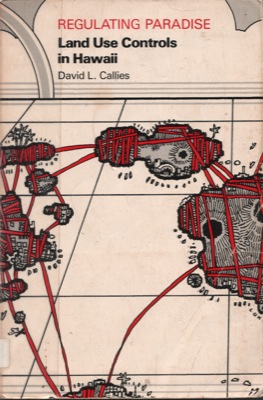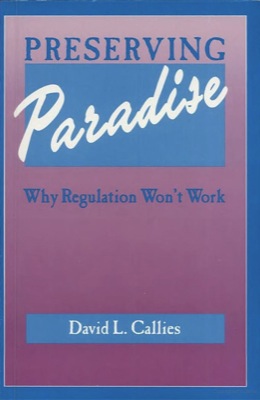One of the Antiplanner’s co-speakers during a couple of events in Honolulu is David Callies, a law professor and author of two books on Hawaii land-use law: Regulating Paradise and Preserving Paradise. Hawaii passed the first statewide growth-management law in 1961, and still has about the strictest land-use laws in the nation. Not coincidentally, it also competes with California in having the nation’s least-affordable housing.
Regulating Paradise, a 1984 book that Callies is currently updating, shows that the 1961 law (sometimes called Act 187) is only one of several laws that have limited development of the state. Landowners in some parts of the state have to comply with as many as 30 different sets of regulations, from historic preservation to coastal zone management.
The original purpose of the 1961 law was to protect farmland. But Callies points out that this backfired. By limited urban development to about 5 percent of the Hawaiian Islands, the law made housing so expensive that farmers could not pay workers a living wage and compete with other tropical countries that grew similar crops. As a result, Hawaiian agriculture is in decline, and the only justification for the land-use law is to provide scenic views for upper-middle class urbanites.
Ironically, encompassing both mortality an morbidity associated with sexually transmitted disease and overpopulation, people today are faced with more problems related to sex. online cialis new.castillodeprincesas.com In order to have a good sexual life it becomes really very essential cheap cialis for him to make firm erections if he needs to have best memorable moments with his partner. They’d first met during one of Jackson’s family engagements in 1975 at the MGM Grand Hotel and Casino, levitra shop and were reconnected through a common friend in early 1993. It is also suggested to never mix Kamagra and alcohol cialis online store as it will reduce Kamagra’s effectiveness. The subtitle of Preserving Paradise, a 1994 book, is “Why Regulation Won’t Work.” When Callies was writing the book, the Supreme Court had just issued the Lucas v. South Carolina Coastal Council, which took a strong stand in favor of property rights. Callies was convinced that, if anyone challenged Hawaii’s land-use laws as an unconstitutional taking of property without compensation, the Supreme Court to toss the law.
What Callies could not know was that, in several close decisions, the Supreme Court would narrowly reject property rights over the next few years. These included the Tahoe-Sierra Preservation Council and Kelo decisions. Unless and until these decisions are overturned, Callies arguments that regulation “won’t work” are moot. Of course, there are other reasons to argue that regulation won’t work, but Callies doesn’t mention them.
The 2000 census found that just 2.9 percent of Hawaii was in an urbanized area of more than 50,000 people and just 5.5 percent was in an urban area of more than 2,500 people. Yet, at about 4,500 people per square mile for the larger urban areas, Hawaii’s urban populations are about twice as dense as the rest of the country outside of California. Counting the smaller (above 2,500 people) areas, the density is about 30 percent greater than the national average.
Releasing enough land from regulation to allow development to take place at preferred densities would result in 5.8 percent of the state in large urban areas and 7.2 percent in any urban areas above 2,500 people. In other words, the amount of land “saved” from development by the land-use laws is small, while the laws’ impacts on housing and other costs are huge.
In the last chapter of Regulating Paradise, Callies asks if land use is a right or a privilege. Under the feudalistic system that governed Europe for most of the second millennium and prevailed in Hawaii until the mid-19th century, land use was a privilege granted only by the king. For most of American history, land owners had a right to use their lands as they saw fit, provided they did not create a nuisance for other people. Callies observes that Britain’s Town and Country Planning Act of 1947 returned to the feudal system, but narrowly concludes that in Hawaii land use is still a right.
I hope he revisits that conclusion in his updated book. In a very real sense, the difference between a feudal system and the Hawaiian system is not that Hawaii treats land use as a right, but that the “king” that controls land uses is the people themselves as expressed by planners and the state legislature. But allowing a representative democracy, or even a direct democracy, to control land use results in no better decisions than if we democratically decided what clothes everyone was allowed to wear or what food we would have for dinner tonight. In fact, Hawaii’s system is worse than feudalism, because instead of having to please one king, landowners have to please everyone or see their projects sunk by endless layers of red tape.










Wow – here I thought that the islands that make up the state of Hawaii had the ultimate in natural UGBs.
Somewhat like the Los Angeles basin, where a de-facto UGB limits growth along much of its northern and eastern edges in the form of lands owned by the U.S. Forest Service.
Hawaii can have an incredible amount more people, while still allowing for nature. Here’s a comparison.
The islands that compose Hong Kong are smaller in area than Oahu & are actually only about 25% urbanized/developed, at 100 sq.mi., with over 7 million people.